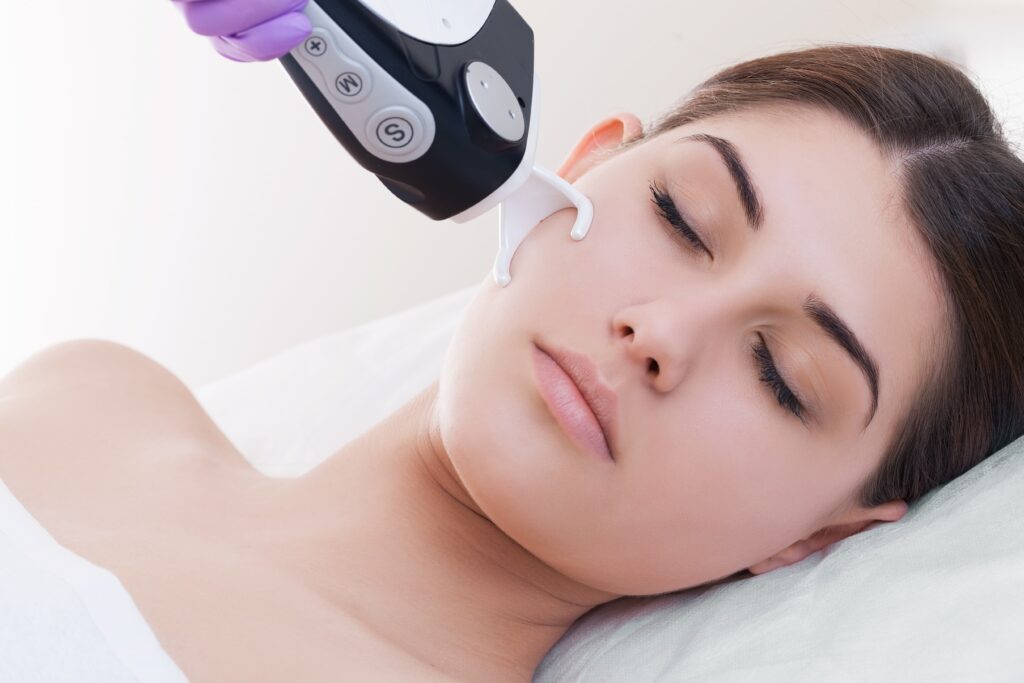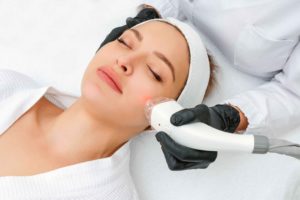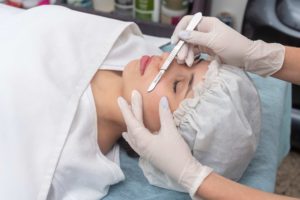
Skin resurfacing is today’s modern approach to skin rejuvenation. With the technology of lasers, this procedure has become well-known among its enthusiasts. Skin resurfacing has many benefits to one’s skin done under the administration of a professional. Knowing the basics of this skin treatment can help you take advantage of the results.
Today, let us learn more about laser skin resurfacing, its basics, what it can do for your skin, and your issues and concerns with it. Please keep reading to learn more about how the procedure works, why it’s done, possible side effects, and more.
What is Laser Skin Resurfacing?
Skin resurfacing is a skincare procedure type administered by dermatologists or physicians. It involves the help of lasers to improve the skin’s texture and appearance.
Based on one’s needs, dermatologists may suggest ablative or non-ablative lasers to be used on skin concerns. Ablative lasers include Erbium or carbon dioxide (CO2). Skin resurfacing treatments of this type help remove scars, warts, and deep wrinkles. In addition, Erbium is used for refined lines, wrinkles, and other superficial skin concerns. Both ablative laser types remove outside layers of the skin.
Meanwhile, non-ablative lasers don’t harm and remove any layer of our skin. Examples of this laser type include pulsed light, pulsed-dye lasers, and fractional lasers. These lasers may also be used for rosacea, spider veins, and acne-related skin concerns.
Ideal Candidates
You might consider skin resurfacing if you have skincare concerns related to your age, sun exposure, or acne-related not treatable using OTCs or over-the-counter products. You can also use laser skin resurfacing to treat one or more of the following skin concerns:
- acne scars
- age spots
- crow’s feet
- enlarged oil glands
- fine lines and wrinkles
- sagging skin
- scars
- uneven skin tone
- warts
Our natural skin tones can also identify if skin resurfacing is the best cosmetic procedure for our skin issues. Those with lighter skin tones are often good candidates because they carry a reduced risk for hyperpigmentation.
However, experts say people believe that laser skin resurfacing only for light skin is quite common. The essential factor is to work with dermatologists or physicians who know which lasers work best for darker skin tones. One example is the Erbium laser. This procedure may not suit people with active acne breakouts or excessive sagging skin.
Professionals also recommend getting this procedure done during fall or winter. This scheduling can help decrease sun exposure, which can damage delicate skin.
Expectations from the Procedure
Aside from targeting the skin’s outer layers, laser skin resurfacing also heats the lower layers in the dermis simultaneously. This procedure will promote the production of collagen. Ideally, fibers from new collagen will help in the production of new skin. These fresher skin are much smoother in texture and much firmer to the touch.
The skin surfacing procedure usually involves the following steps:
- Your skin needs to be prepared before laser skin resurfacing. This preparation consists of treatments done several weeks before the process. It increases your skin’s tolerance to professional treatments and decreases your risk of after-effects.
- On your procedure day, your doctor will apply a topical anesthetic to the treated area. This anesthetic reduces pain and makes you more comfortable during the process. If a large skin area is being treated, your doctor may suggest a sedative or painkillers.
- Next, the skin is cleansed to remove bacteria, dirt, and excess oil.
- Doctors begin treatments with the selected laser, moving slowly around the designated skin area.
- Finally, practitioners will dress the treatment area in wraps to help protect the skin at the end of the procedure.
Possible Risks and Side Effects
Like other cosmetic procedures, laser skin resurfacing risks side effects. These include:
- bumps
- burning
- hyperpigmentation
- infection
- rash
- redness
- scars
- swelling
Following your doctor’s pre-care and post-care instructions may help lessen potential risks for these complications. Based on your medical history, doctors may be prescribed a preventive antibiotic or antiviral medication.
Taking acne medications, such as isotretinoin with one known brand, Accutane, may increase your risk for scars. It would help if you talked to your dermatologist about any medical conditions and all medications you take, including over-the-counter products.
Experts recommend you quit smoking for at least two weeks before undergoing laser skin resurfacing. Smoking after this procedure can also increase your risk for side effects.
Recovery and Aftercare Expectations
Even though there are dermatologic surgeons who perform laser skin resurfacing, these skin procedures aren’t indeed classified as surgeries. Immediately leave your doctor’s office after your procedure.
Still, downtime and recovery are necessary to ensure your skin heals properly. These steps reduce your risk for side effects and help you achieve the desired results.
Side Effects and Duration
Healing usually takes between 3-10 days. As a rule, the bigger the treatment area and the deeper the laser skin resurfacing, the longer the recovery time. For example, recovery from ablative laser treatment may take up to three weeks.
During recovery, your skin may be highly red and scabbed over. Slight cases of peeling may happen. Use ice packs to help reduce any potential swelling. Although you don’t need to be at home during the recovery process, you’ll want to avoid known areas of germs — such as the gym — that could increase your risk of infection.
Cleansing
You’ll also need to adjust your daily skincare routine. According to professionals, you’ll need 2-5 times of facial cleansing per day. Instead of the usual cleansers, use saline or vinegar-based solutions recommended by your doctor.
You’ll also need to wear new dressings to keep your skin clean. Daily moisturizers can also aid with healing, but be sure to let your doctor know first.
Protection
Our skin may become too sensitive to the sun for up to one year after each laser skin resurfacing procedure. Wearing sunscreens that have minimum SPFs of 30 can help reduce your risk of sunburn and
further damage to the sun.
Additionally, sunscreen should be applied every morning, even when it’s cloudy. Doing this step protects your skin, reapplying whenever needed throughout the day.
Expectations from the Results
Laser skin resurfacing treatments of non-ablative origins don’t pose as great of a risk for side effects, but you may need multiple treatments to achieve your desired results. On the other hand, ablative lasers may help resolve concerns after only one treatment.
Results vary per individual and are also based on the extent of the initial concerns being treated. Expect results to last for several years after completing your treatment sessions. However, as the results aren’t permanent, repeating the laser skin resurfacing procedure may be required at some point.
Final Thoughts on Laser Skin Resurfacing
Laser skin resurfacing has genuinely changed the way how skin resurfacing is done. Discuss these basics with your doctor or healthcare provider so you can also enjoy the benefits skin resurfacing has in store for you.
Are you ready to experience skin resurfacing? Our amazing friends at Beauty Nurse Bre can help you today. Visit them now! https://beautynursebre.com/





